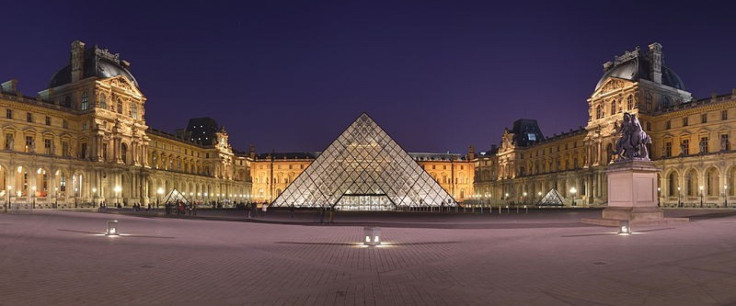Louvre Opens Islamic Arts Gallery Amid Tension With Muslim World

Amidst a worsening climate between the west and the Muslim nations, the famed Louvre Museum of Paris has opened a new wing dedicated to Islamic Arts, exhibiting 2,500 objects in a new architectural extension – the greatest such addition since I.M. Pei's celebrated glass pyramid in 1989.
The gallery, which will contain the most extensive collection of Islamic arts in Europe, is a decade-long project that cost about $130 million. The new building resembles a floating carpet with an undulating glass and metal roof, sitting in the neo-classical, 19th century Visconti courtyard.
The project was financed by private donations, as well as funding from the French government, which recognizes the importance of enhancing cultural ties.
Originally former President Jacques Chirac’s idea in 2002, the gallery’s intent was to push for a “dialogue of cultures” that will help break down the misunderstandings between the West and the Muslim world.
With its general public opening set on Saturday, the new gallery unveils at a sensitive time, as violent protests have erupted around the world over the anti-Islam film, “Innocence of the Muslim." At least 42 people have died in such protests around the world, with more deaths reported Friday in Pakistan. About 80 people were arrested during a protest of the film outside the U.S. embassy in Paris.
In addition, Muslims in France are outraged by Charlie Hebdo, a French satirical magazine, which depicted the Prophet Muhammad in obscene cartoons, sparking a security alert by the Paris government. Although no violence linked to that publication has yet broken out, the French government has shut down embassies and schools in 20 different countries on Friday as a precautionary measure in case of attacks or protests.
French authorities also stationed riot police outside Hebdo’s headquarter office, which was firebombed last November after it published a similar anti-Islam screed entitled “Charia Hebdo,” which was purported to be "guest-edited" by the Prophet Muhammad.
Stephane Charbonnier, the publishing director of Charlie Hebdo, insisted that the drawings were not intended to exacerbate the protests or incite violence. Yet, the company did insist on printing another 70,000 editions, all featuring the Mohammed cartoons.
The inflammatory cartoons have divided France -- some in the press have condemned the magazine, while others defended Hebdo’s decision on the basis of free speech.
President Francois Hollande, when attending an event for the gallery's opening earlier this week, said: “The honor of Islamic civilizations is older, more vibrant and more tolerant than some of those who pretend to be speaking in their name today.”
"It is the exact opposite of the obscurantism that annihilates the principles and destroys the values of Islam by spreading violence and hatred."
Islam is France’s second-most widely practiced religion. Up to 10 percent of France's population -- some 6 million people -- are Muslim.
Hoping to inspire people to focus more on the cultural and aesthetic values of the Islamic culture, Henri Loyrette, President and Director of the Louvre Museum said that the gallery “reveals the radiant face of a civilization.”
Yet, the content within the gallery is not without controversy.
Many Muslims consider any representation of Allah or the Prophet Mohammad offensive, for that might encourage idolatry. But the museum contains three images of Muhammad with his face exposed.
Charlotte Maury, a historical consultant for the Louvre, acknowledged that some Muslims could be “shocked” by such depictions and may find them offensive.
“That’s why we put it on the side. We felt we had to use them, to illustrate (Islamic) history the way we see it,” she said.
Maury explained that because Muhammad’s face was only covered up after the 15th century when the representation of the prophet was interpreted as disrespectful, the museum has to include these controversial paintings to provide a complete picture of Islamic history.
The greatest single donor for the project, Prince Waleed Bin Talal, of Saudi Arabia, explained his motivation for his $22 million largesse: “Since 9/11, it is the duty of all Muslims to explain to the West what real Islam is like and how peaceful the religion is.”
The opening of the new Department of Islamic Arts brings another chapter to the difficult ongoing saga between the Muslim world and the west.
“The best weapons for fighting fanaticism that claims to be coming from Islam are found in Islam itself,” Hollande said while visiting the gallery. “What more beautiful message than that demonstrated here by these works?”
© Copyright IBTimes 2024. All rights reserved.





















